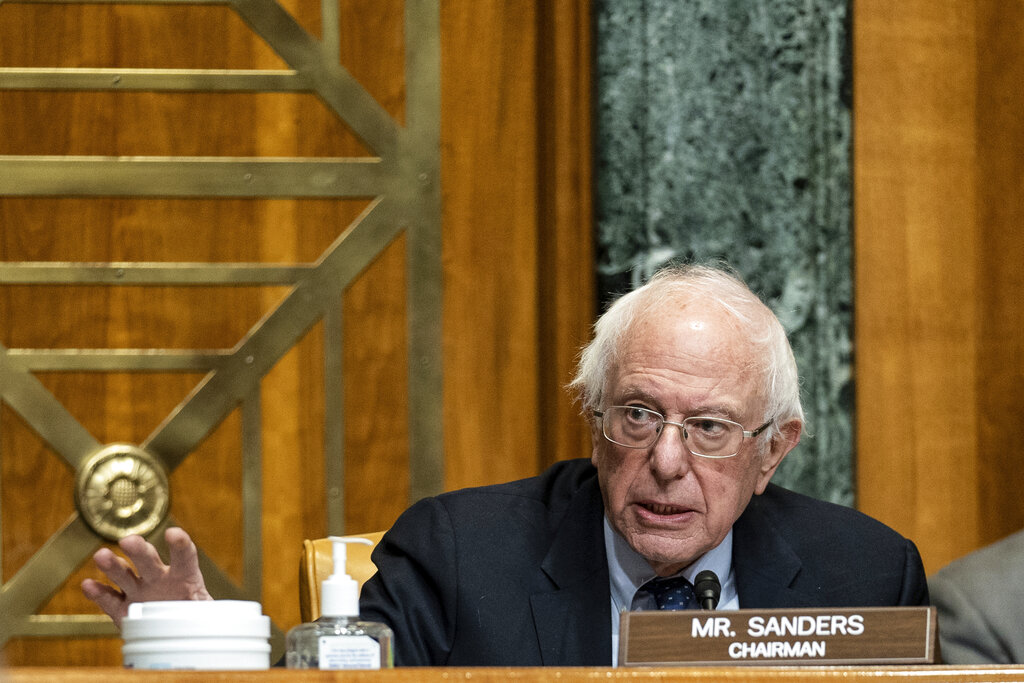
Are Americans going bankrupt because of medical debt? Leading progressives seem to think so.
Sen. Bernie Sanders, I-Vt., recently called for all medical debt to be canceled. “‘Medical debt’ and ‘Medical bankruptcy’ are two phrases that should not exist in the United States of America,” he said after the major credit bureaus recently announced they’d remove paid-off medical debt previously sent to collections from credit reports.
But the data indicate that there’s no epidemic of medical bankruptcy.
Consider a new study from the non-partisan Kaiser Family Foundation, which found that just 9% of American adults owe more than $250 in healthcare costs. Among those with some amount of medical debt, $2,000 is the median debt load — meaning half owe more and half owe less.
That lines up with earlier research. According to a study in the New England Journal of Medicine, the proportion of bankruptcies actually caused by medical debt is just 4%.
Whether those numbers are “too high” may be subjective, but it’s important to put them in perspective.
Two thousand dollars is less than one-third the average credit card debt of U.S. families, which stands at nearly $6,300. It’s not much more than the $1,609 the median homeowner pays each month for his or her mortgage, insurance, and taxes.
Tens of millions of borrowers manage these other types of debt every day, without any call for government intervention.
Medical debt is somehow different — at least to progressives. To cancel it, Sen. Sanders has vowed to re-introduce “Medicare for All” legislation this month that would outlaw private insurance and enroll everyone in a new government-run health plan. People can’t incur medical debt if they have government-provided health insurance, the argument goes.
But increasing the number of people who have health insurance doesn’t appear to reduce medical debt. About 85% of Americans had health insurance in 2012, just before Obamacare took effect; today, more than 91% do. Yet there has been no drop in personal bankruptcy filings.
Or look at evidence from Canada. The average Canadian family of four hands over $15,000 a year in taxes for government-sponsored health insurance. Canadians have to wait months for specialist care and lack access to the latest treatments and prescription drugs. But at least they’re protected from a trip to the poor house, right?
Related Articles
Yes on Measure B, Newport Beach voters should directly elect the mayor: Endorsement
Plastics ban is more than another tax
Compensation for victims of the most violent crimes: Letters
California crises abound, but they won’t be debated
Assembly head right to critique the bullet train
Wrong. Despite its government-run, single-payer system — an inspiration for Sanders’s vision for Medicare for All — more Canadians file for bankruptcy, per capita, than do Americans. In 2019, the last year before pandemic stimulus programs skewed the numbers, 3.6 Canadians per 1,000 filed for bankruptcy. In the United States, the figure was just 2.3.
In short, the progressive narrative that the cost of health care is driving Americans to financial ruin is just wrong. Launching a government takeover of health insurance to address this non-existent problem would cost taxpayers trillions of dollars — and consign them to long waits for subpar care.
Sally C. Pipes is President, CEO, and Thomas W. Smith Fellow in Health Care Policy at the Pacific Research Institute. Her latest book is “False Premise, False Promise: The Disastrous Reality of Medicare for All” (Encounter 2020). Follow her on Twitter @sallypipes.
